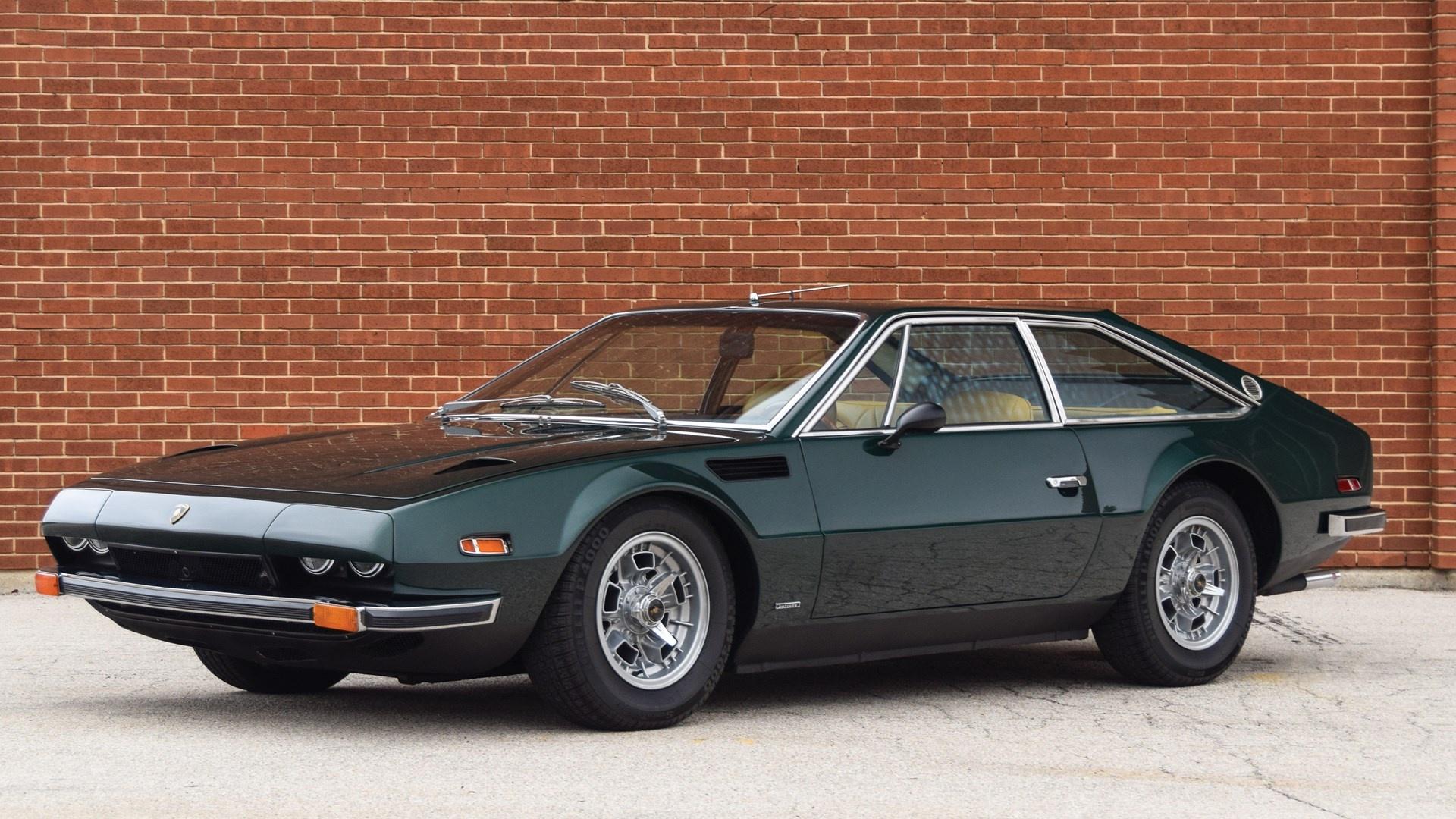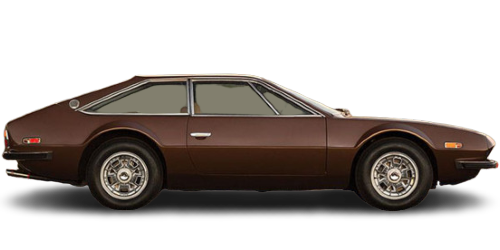By 1970 Automobili Lamborghini SpA already had a very impressive line up for sale, considering the company wasn’t even five years in business, the 350 GT was the first production model in 1966, replaced by the larger and more powerful 400 GT 2+2 that was subsequently replaced by the Islero in 1968 by that time Lamborghini also had the large, four-seater Espada for sale next to the sensuous Miura, the first mid-engine road car business was going strong, but with two great cars available, sales for the Islero just didn’t reach the level Ferruccio wanted, so he decided to replace the angular Islero after only two years of production during which a total 225 units left the gates.
During the March 1970, Geneva Auto Show Automobili Lamborghini SpA unveiled the Jarama as the successor to the Islero, designed by none other than Marcello Gandini, who also designed the Espada and Miura. The Jarama body panels were made by Bertone with assembly at Carrozzerio Marazzi, who also built the Islero by the way, this new 1970 2+2 became the last front engine V12 GT by Lamborghini.
The Lamborghini Jarama was aiming at the same market segment as the Islero did before, the wealthy businessman who wanted a high performance, luxurious car that didn’t draw too much attention for him to enjoy on a daily basis without being too large like the Espada, or too exotic like the Miura Ferruccio wanted to keep a 2+2 model in the line up for those customers with impressive looks without being offensive and the Jarama fit that description perfectly.
As Chief Engineering Giampaolo Dallara left the company it was up to Paolo Stanzani to develop the Islero successor, the latter used a 27cm (10.7 in) shortened Espada chassis to keep development costs down, this resulted in a wider track compared to the Islero, giving the Jarama a wide and low, aggressive stance perfectly suited for a Lamborghini GT. The wheelbase on the Jarama was even 7cm shorter compared to the Islero, but this didn’t impose a problem for the interior as the engine could be mounted lower into the modified Espada chassis.
The suspension setup for the Jarama was a duplicate of the Espada system with coil springs over Koni shock absorbers while the wheels became the well known Campagnolo knock-off 15-inch units seen on the Islero, the Espada and naturally the Miura.
The design of the Jarama showed very nice, flared wheel arches, two NACA ducts on the engine cover (inspired by the Espada hood probably), a small winglet integrated into the rear edge of the roof and an overall hatchback look, do note however that there was no rear hatch but only a rather small luggage compartment cover that opened up into a 250 liter large space for even more luggage space the rear seats could be folded down.
One of the most characteristic features on the Lamborghini Jarama are the four, large headlights installed behind folding down covers unlike the pop-up headlights on the Islero or the exposed lamps on the Espada, the Jarama used a totally innovative way to hide the headlights when not in use. The design of the front looked very clean and aerodynamic during the day, but when the headlights were needed small electric motors would tilt down the covers to reveal the quad setup.
The Jarama body was made from steel which made this 2+2 a rather heavy car, even with a V12 (L405 engine) delivering 350hp the Jarama was slower than the Islero S she replaced, an overall weight of 1540 kg didn’t help either (The Islero S was only 1460 kg) and top speed was published at 250 Km/h.
The engine for the Jarama was an evolution of the 3929cc unit from the Islero, with modified crankshafts, other distributors, a new radiator and water cooling system, and a more powerful alternator, this V12 was now legal in the United States too the Jarama would be sold in the US with those typical side markers fitted at the front and rear.
Most sources state the side vents behind the front wheels on the fenders were a Jarama S feature, but this doesn’t seem to be completely true, they have been fitted to the Jarama GT too, most likely the last 60 units built received them at the factory before being delivered while several early Jarama were retrofit with them to avoid overheating.
Air conditioning was available as an option on the Jarama GT while leather seats were standard together with blue tinted, electric windows and a heated rear window. The dashboard was covered with soft Italian leather with the dials on a wooden background, in front of the driver behind the wood-trimmed steering wheel a row of toggle switches were placed on a horizontal section while the wide central console housed controls, air vents and the wood topped gear shifter overall a very luxurious place to be for the distinguished business man.
Over a period of two years, a total of 177 Lamborghini Jarama were built before an improved Jarama S was unveiled at the 1972 Geneva Auto Show, sources state a total of 20 Jarama were delivered with the dual sunroof option (18 of them sold in the USA) and six left the factory in RHD configuration.
While Jarama is a famous Grand Prix track near Madrid in Spain, in case of this Lamborghini the name refers to a breed of some of the fiercest bulls in Spain, bred by Don Manuel de Gavaria in La Mancha, they pastured near the Jarama river in Titulcia.




